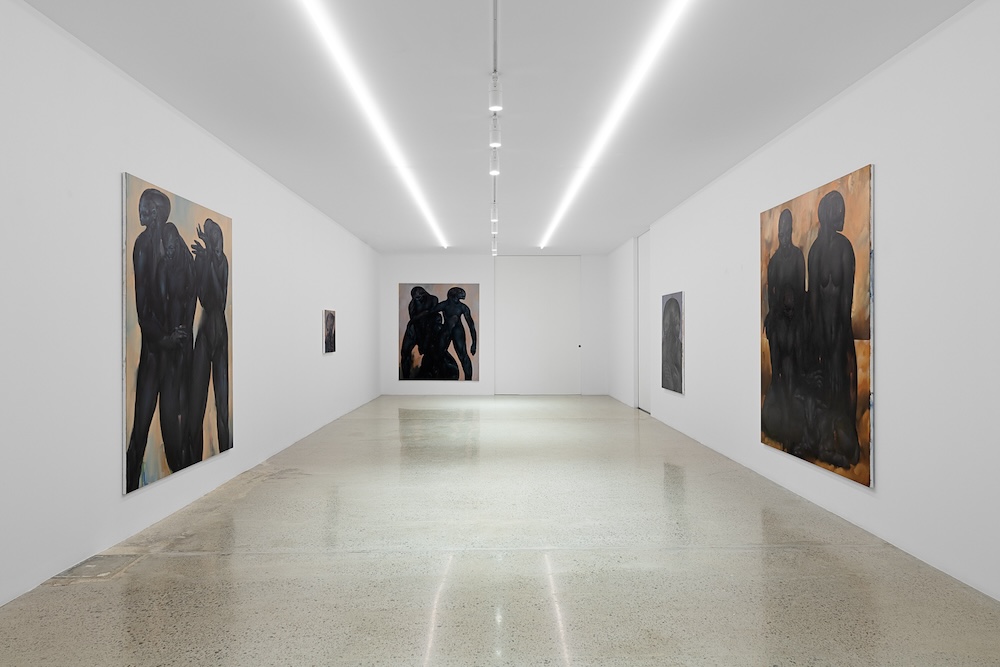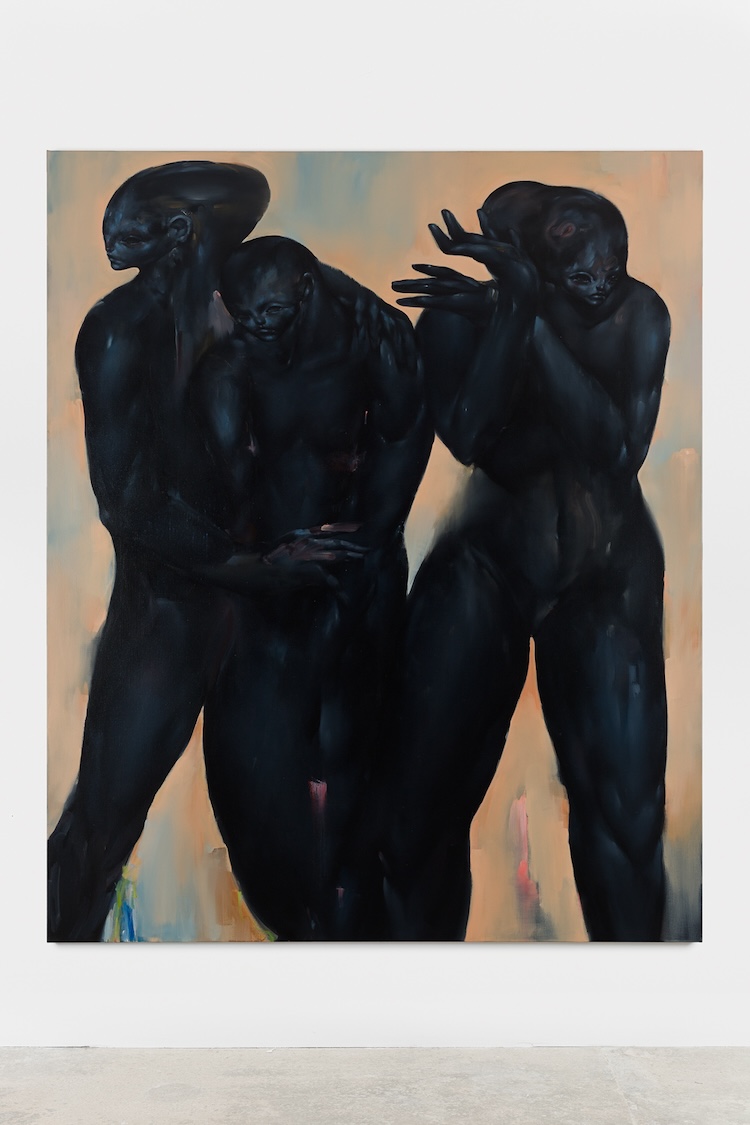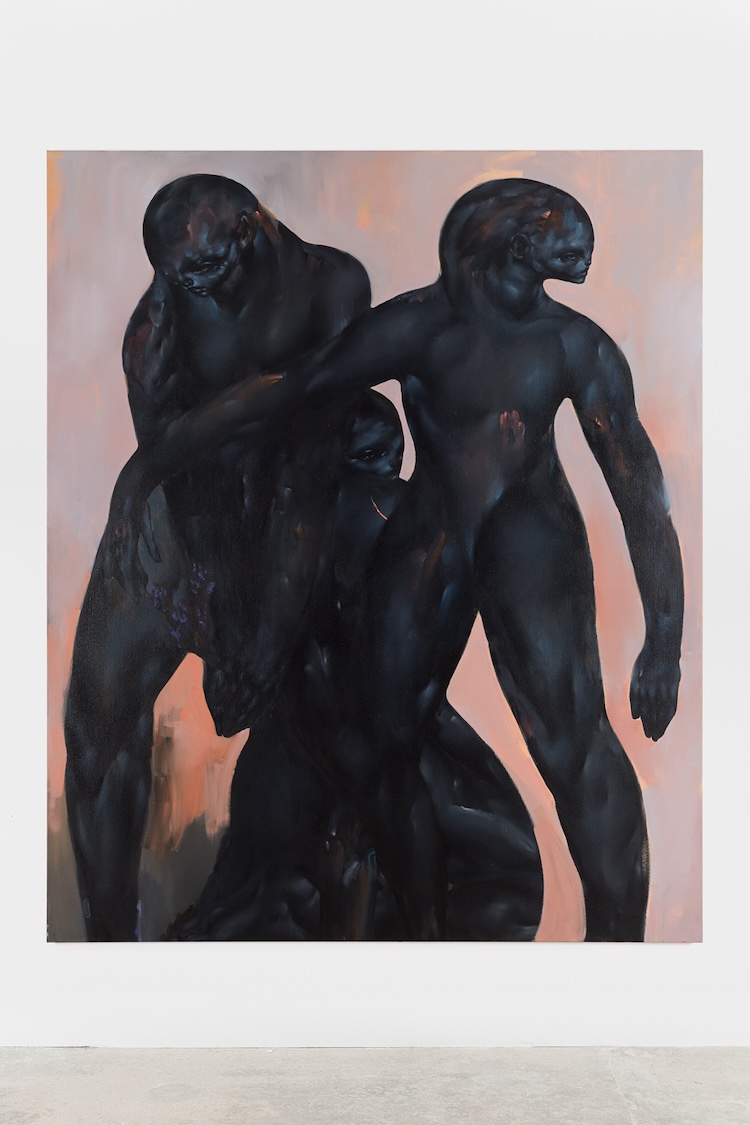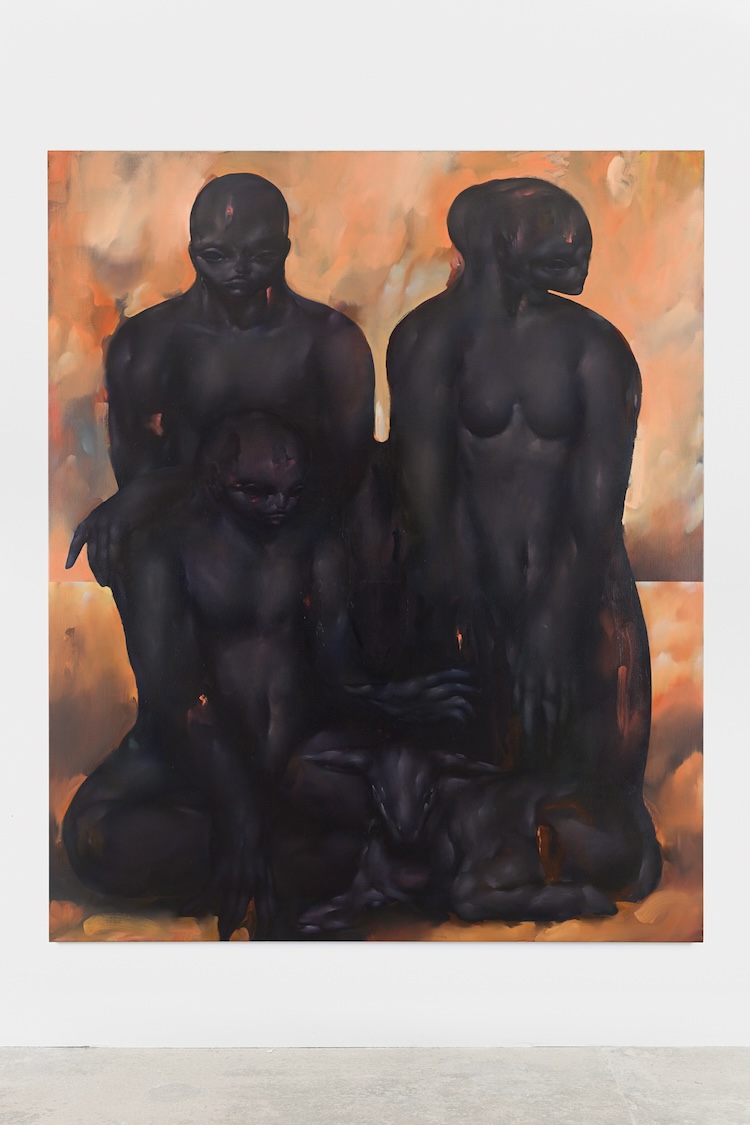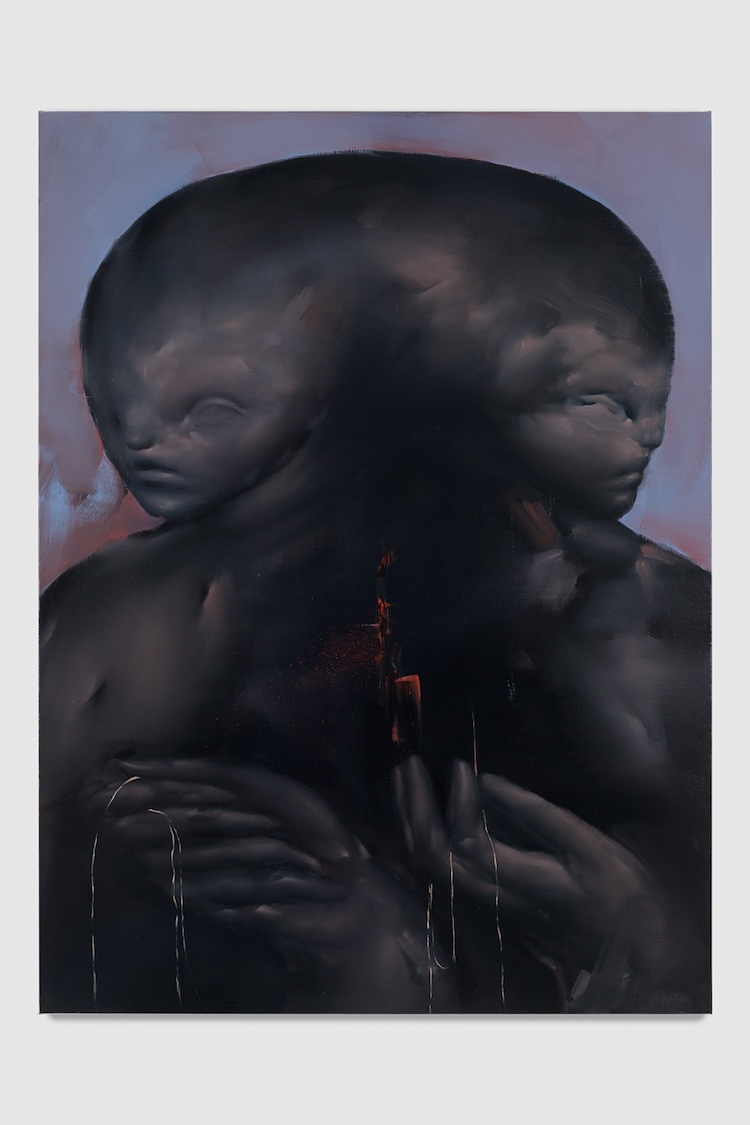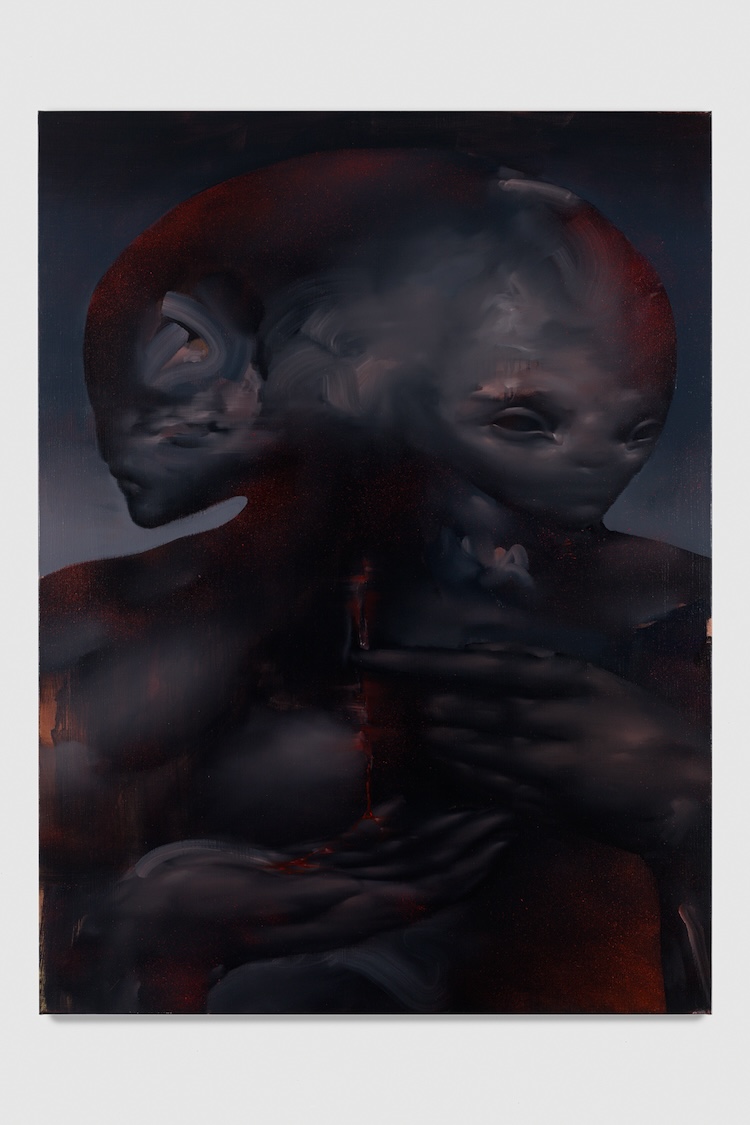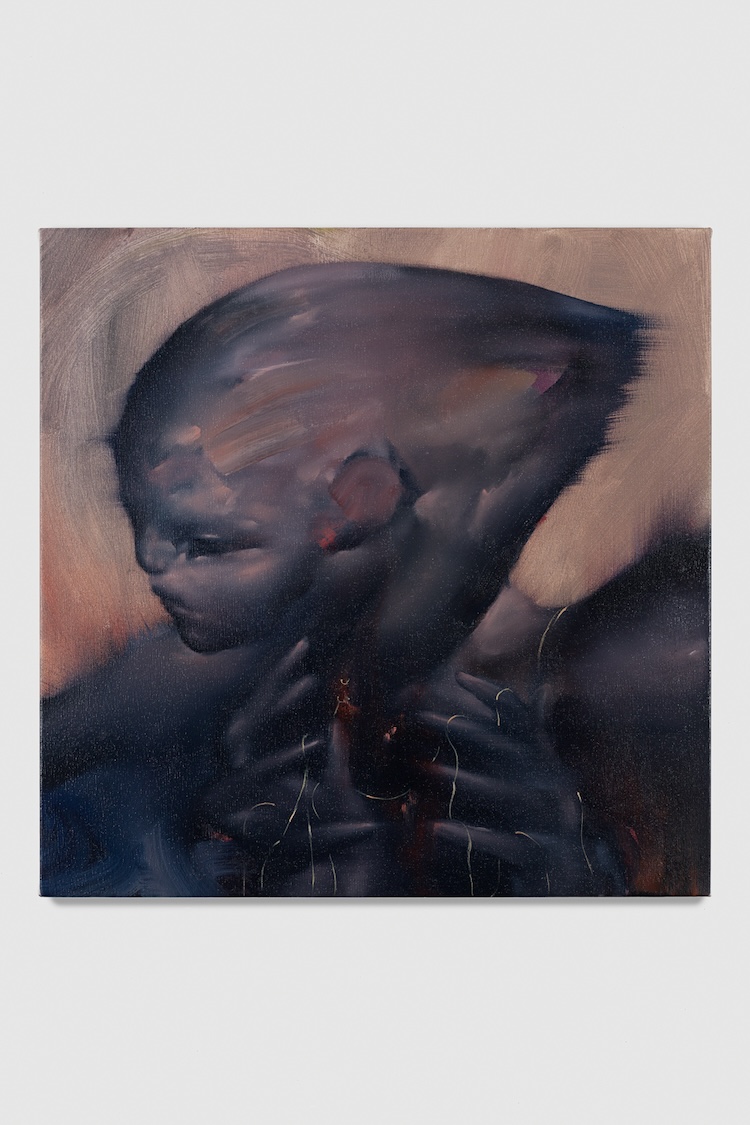Théo Viardin’s paintings do not exist without dichotomies, without oppositions, without the complexity of contrast. Within this way of observing the world, pessimism and optimism also coexist. In his work, Viardin reflects on the end of humanity as we know it and the arrival of another era, after we have deprived the planet of its most necessary resources. His figures painted in oil somehow represent a humanity from the future but with primitive features. While always maintaining an antagonistic vision, he shows us danger and protection, the individual and the community, lightness and darkness, classicism and contemporaneity.
Although he does not give direct answers, Viardin’s speech is tinged with hope, in a philosophical sense. In contrast to Schopenhauer's maxim that the greatest happiness we can achieve is the absence of pain, the Stoic and Nietzschean notion of Amor Fati (the love of destiny) presents another point of view: understanding that suffering is part of life, and reach a state of acceptance, even love, for that unchangeable reality. Recognizing life as it is, without wanting to add or subtract anything from it. Most of the figures that we can see in Beautiful Chaos of Existence at L21 gallery look towards the horizon, outside the limits of the painting, sensing possible dangers. At the same time, their bodies protect and warm each other. The artist recognizes and captures the coexistence of danger and love, pain and hope, and does so from a compassionate and accepting perspective.
The title of the exhibition also refers to the German philosopher, in particular to his book The Gay Science, whose aphorism on eternal recurrence particularly marked Viardin: “What, if some day or night a demon were to steal after you into your loneliest loneliness and say to you: “This life as you now live it and have lived it, you will have to live once more and innumerable times more; and there will be nothing new in it, but every pain and every joy and every thought and sigh and everything unutterably small or great in your life will have to return to you, all in the same succession and sequence […] how well disposed would you have to become to yourself and to life to crave nothing more fervently than this ultimate eternal confirmation and seal?”
For Viardin’s characters, this could mean that both danger and protection are as they should be, and that their repeated figures on the paintings are a kind of eternal recurrence. For us, it might transform our encounter with these works into an intimate experience and a reflection on destiny, ineluctability, but also on the strength of our free will when deciding how to face our existence. —Florence Rodenstein

